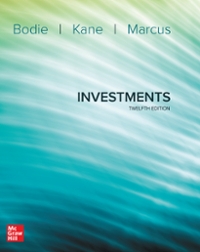Answered step by step
Verified Expert Solution
Question
1 Approved Answer
1. Two important aspects of debt financing are its tax advantages and the threat of bankruptcy. As a company shifts to more and more debt
1. Two important aspects of debt financing are its tax advantages and the threat of bankruptcy. As a company shifts to more and more debt financing: (Points : 1) these factors reinforce one another, implying that more debt is always better. the tax advantage always outweighs bankruptcy risk. the threat of bankruptcy makes only very low levels of debt acceptable. the threat of bankruptcy eventually completely offsets the tax advantage of debt. Question 2.2. You receive an annual raise of $4,000. If you tax rate is 22%, how much will this increase your after-tax earnings? (Points : 1) $880.00 $3,120.00 $4,000.00 $4,880.00 Question 3.3. The most obvious leakage or capital market imperfection affecting the debt and equity choice is: (Points : 1) bankruptcy risk. differential taxation of cash flows between debt and equity. the obligatory payment of interest and discretionary payment of dividends. the inability of bond rating agencies to perfectly foresee risk. Question 4.4. The typical corporate investment requires a large cash outlay followed by several years of cash inflows. To make these cash flows comparable, we do which of the following? (Points : 1) Adjust both cash outflows and inflows for taxes. Subtract interest charges to reflect the time value of money. Adjust both outflows and inflows for the effects of depreciation. Apply time value of money concepts and compare present values. Question 5.5. Chapter 7 introduced three methods for evaluating a corporate investment decision. Which of the following is not one of those methods? (Points : 1) payback period net present value (NPV) return on assets (ROA) internal rate of return (IRR) Question 6.6. Net present value (NPV) is best defined as: (Points : 1) the difference between a projects benefits and its costs. the difference between the present value of a projects benefits and the present value of its costs. the present value of a projects benefits. the ratio of the present value of a projects benefits and its costs. Question 7.7. Sunk costs are best described as: (Points : 1) money that has been lost. an expenditure that did not produce a profitable product. an expenditure on a product that was later discontinued. expenditures on a proposed project that cannot be recovered whether the project is implemented or not. Question 8.8. If depreciation expense is a noncash charge, why do we consider it when determining cash flows? (Points : 1) because depreciation expense reduces taxable income, so reduces the amount of taxes paid because depreciation expense offsets part of the initial cash outlay for depreciable assets because depreciation expense reduces net income because depreciation expense is a method for allocating costs Question 9.9. Which of the following is a problem associated with bankruptcy? (Points : 1) It is embarrassing for managers to work at a firm that fails. Bankruptcy shifts assets to more highly valued uses. The costs associated with bankruptcy further reduce cash flows to shareholders. A company immediately ceases to be able to conduct business once it has filed for bankruptcy. Question 10.10. GMX Resources, an independent oil and gas exploration and production company, has a tax rate of 38%. If it purchases $2,000,000 of drilling pipe, what is the after-tax cost of this expenditure? (Points : 1) $760,000 $1,240,000 $2,000,000 $2,760,000
Step by Step Solution
There are 3 Steps involved in it
Step: 1

Get Instant Access to Expert-Tailored Solutions
See step-by-step solutions with expert insights and AI powered tools for academic success
Step: 2

Step: 3

Ace Your Homework with AI
Get the answers you need in no time with our AI-driven, step-by-step assistance
Get Started


